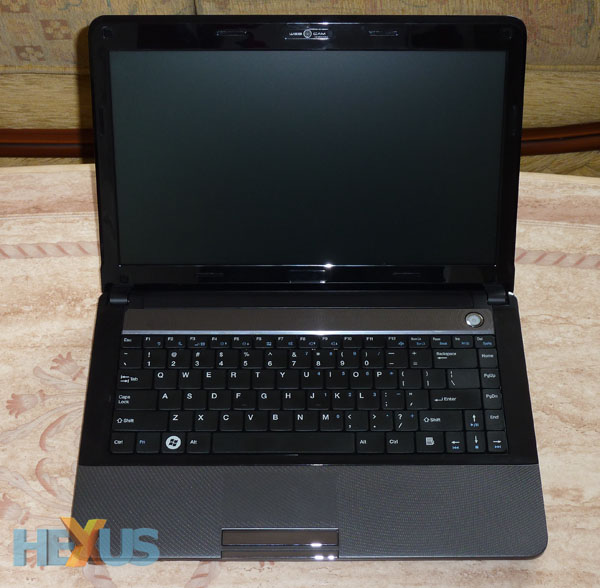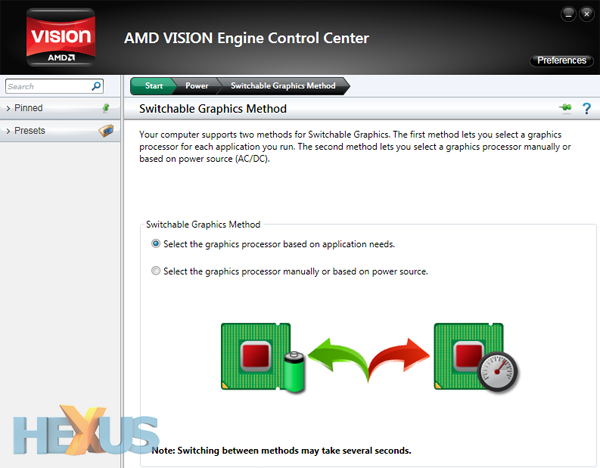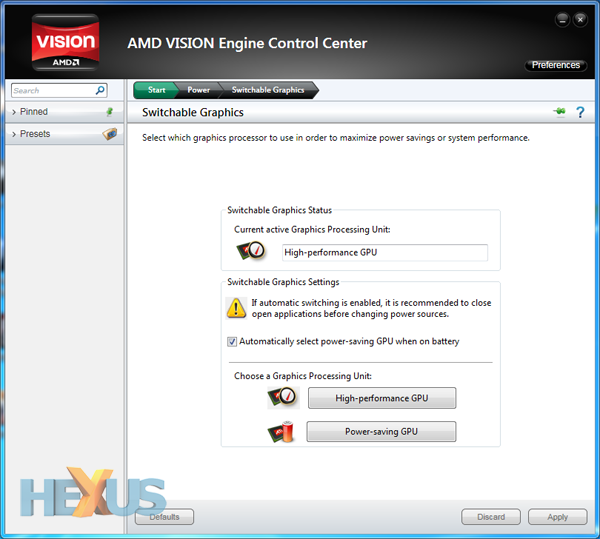A mainstream laptop to test with
AMD provided HEXUS with an OEM-sourced laptop with Llano technology inside. Manufactured by Compal, the laptop takes in the A8-3500M APU - 35W TDP; quad-core running at 1.5GHz native clockspeed; 400 Radeon cores with a 444MHz frequency, and system RAM at 1,333MHz - 4GB of memory, a 250GB SATA hard-drive, and Blu-ray/DVD combo drive.
Bringing Dual Graphics to the fore, a discrete Radeon HD 6630M (Whistler LP) is included, too. It's equipped with a 1GB DDR3 (1,600MHz) frame-buffer, connected to the GPU via a 128-bit memory bus, and runs at a maximum 485MHz core.
The APU chip's graphics are identified as Radeon HD 6620G, though the model-number inflation from using Dual Graphics means the duo ,when running together, is collectively referred to as Radeon HD 6690G2.

Housed in a mid-sized chassis that incorporates a 14in, 1,366x768-resolution screen, the 2.2kg is indicative of the form factor we're likely to see from big-name manufacturers such as HP, Dell and Acer.
Making the most out of the A70M FCH on this model, the laptop has USB 3.0 along with HDMI-out and VGA. The battery, too, is mainstream, rated at 58WHr. Windows 7 Home Premium SP1 64-bit is pre-installed by AMD but we ran our own benchmarks.

Having two roughly-equivalent graphics in one laptop paves the way for some nifty GPU-switching technology. The control panel enables you to switch between the APU and (genuinely) discrete graphics (dGPU) by two methods, and we draw attention to this procedure because we believe it will be replicated in all retail laptops.
You can either force the control panel to choose the desired GPU on application needs. This means that a pop-up box appears when an application is first opened, providing an option to run it on either the APU or dGPU. AMD has an unpublished table that's referenced each time. For example, Internet Explorer default to the APU (power-saving mode) while, say, 3DMark 11 is run on the dGPU (high-performance mode). The user is free to add or change entries as they see fit, coupling applications to either GPU.

It's is through this mode that Dual Graphics (aka CrossFire) is enabled. It's a simple case of selecting CrossFire and teaming the two GPUs up.

The other method is to 'select the graphics processor manually'. Here, it's a one-fits-all power hierarchy, that is, either the dGPU or APU GPU can be turned on. What this all boils down to is that any Llano-powered laptop can be set to run either with the APU's graphics, a discrete GPU's graphics, and the two together via Dual Graphics. Explicitly switching between the APU and dGPU takes several seconds as the system gets its display house in order. In this respect, then, NVIDIA's Optimus is the better solution, seamlessly navigating between iGPU and dGPU.
AMD needs to make it easier for consumers to realise the graphics performance of a Llano laptop. Perhaps something as simple as 'Best', 'Better' and 'Good' will work, with a note stating that each mode is likely to provide X hours of battery life.









